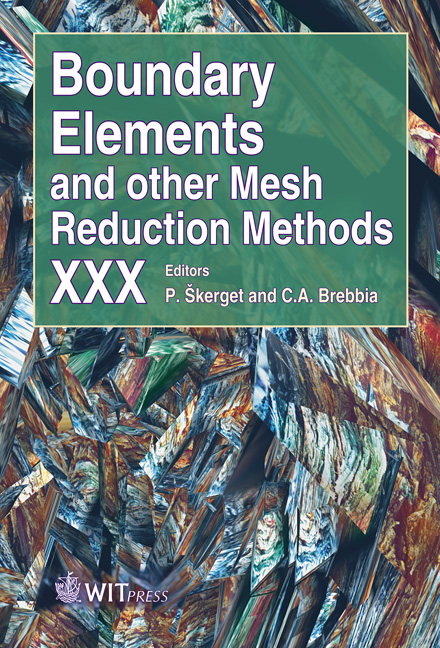Boundary Element Method For Micropolar Fluid Flow In A Channel
Price
Free (open access)
Transaction
Volume
47
Pages
10
Page Range
33 - 42
Published
2008
Size
502 kb
Paper DOI
10.2495/BE080041
Copyright
WIT Press
Author(s)
M. Zadravec, M. Hriberšek & L. Škerget
Abstract
The contribution deals with numerical simulation of micropolar fluid flow in channel, describing flow of suspensions with rigid and underformable particles with own rotation. The micropolar fluid flow theory is incorporated into the framework of a velocity-vorticity formulation of Navier-Stokes equations. The governing equations are derived in differential and integral form, resulting from the application of a Boundary Element Method (BEM). In integral transformations, the diffusion-convection fundamental solution for flow kinetics, including vorticity transport, heat transport and microrotation transport, is implemented. The Poiseuille flow test case is the benchmark case of channel flow. The results show, that the ratio between vortex viscosity coefficient and spin gradient viscosity coefficient controls the microrotation in the micro channel. Keywords: boundary element method, micropolar fluid, poiseuille flow. 1 Introduction In the recent years there was a progress in a micromachining technology. Opinion of a few scientists is that flows on the microscale differ from that on a macroscale, described by the Navier-Stokes equations. To clarify such assumption micropolar fluid theory is gaining interest of a lot of researchers. Micropolar fluids are a subclass of microfluids, introduced by Eringen [1]. A simple microfluid is by Eringen’s definition a fluid medium whose properties and behaviour are influenced by the local motions of the material particles contained in each of its volume elements. A microfluid is isotropic viscous fluid and possesses local inertia. Because of a complex formulation for a general microfluid this class of fluids is divided into subclasses, which allow a simplified
Keywords
boundary element method, micropolar fluid, poiseuille flow.





